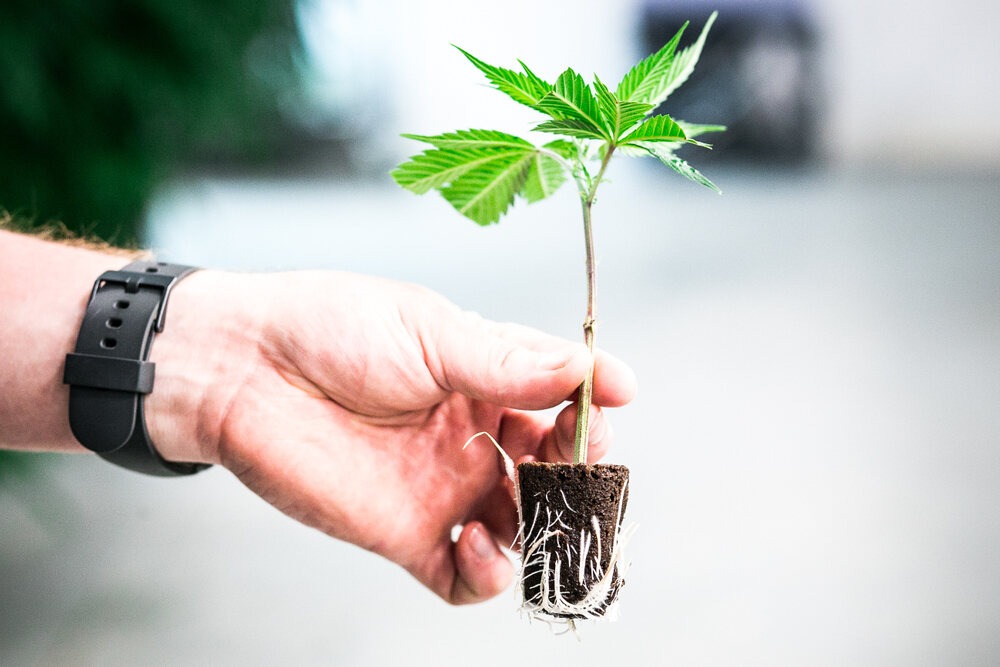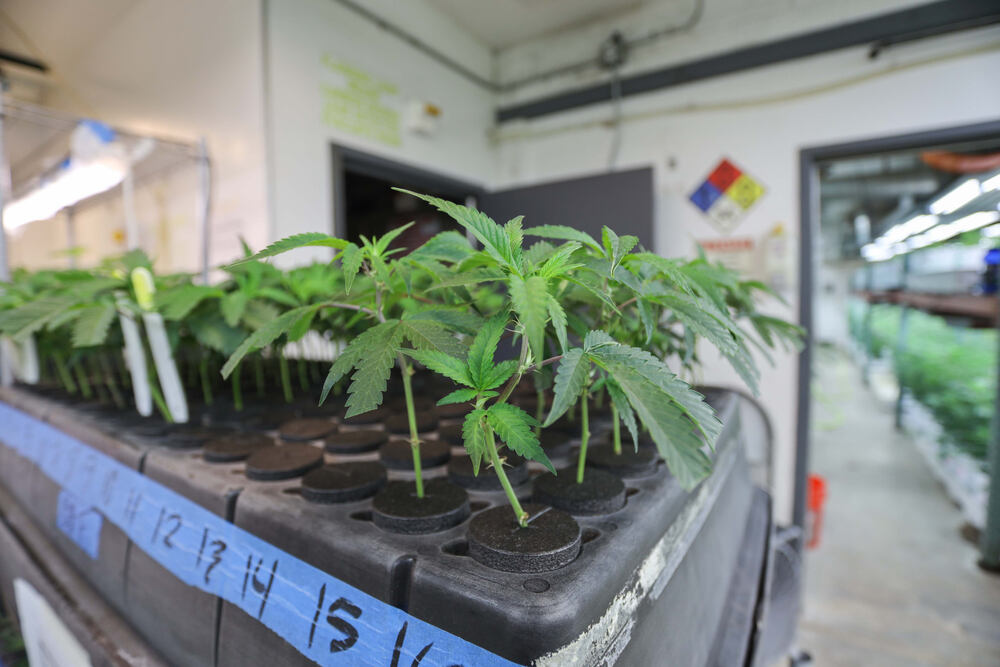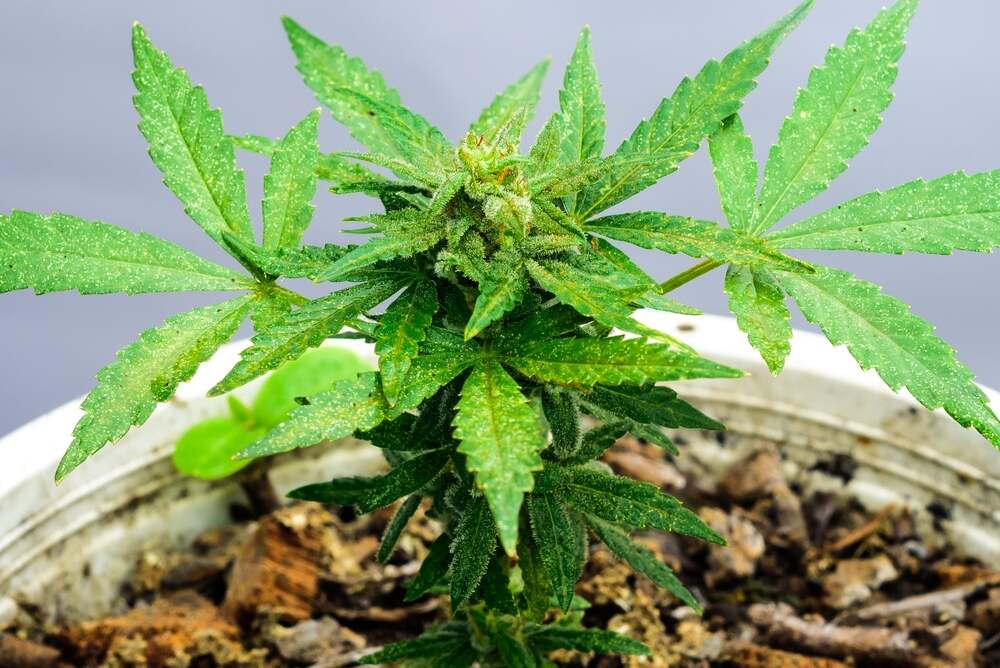
Can you clone autoflowers?
In short, yes, it is possible to clone autoflowers. However, the real question you should be asking: Is cloning autoflowers worth it? In this article, we’ll look into the potential drawbacks of cloning autoflowers, how cloning works and if it’s even worth attempting on ruderalis strains.
What is cloning cannabis?
In simple terms, cloning cannabis involves creating genetically identical replicas of a mother cannabis plant (remember, dioecious cannabis plants have both a mother and a father). Here’s how it works:
When you identify a cannabis plant with desirable traits – be it high yield, superior potency, or an appealing flavor profile (aka phenotypes or phenos) – you’ll probably want to replicate those traits as closely as possible. Enter cloning. You take a cutting from the prized mother plant, carefully manicuring the bottom of the cutting to develop its roots. Essentially, you are condensing the natural process of reproduction into a simpler, more controlled and precise method.
What makes this process fascinating is that the cloned plant maintains all the genetic characteristics of its parent. If the mother plant possesses certain unique qualities, the clone will indeed exhibit these exact features.
What are the benefits of growing clones?
Growing clones offers several benefits to cannabis cultivators. Here are some of the key advantages:
Genetic Consistency: Cloning cannabis ensures that each new plant is a genetic replica of the parent plant. This means you can expect the same potency, aroma, flavor, and growth characteristics (aka phenos) across all your cloned plants.
Time Efficiency: Clones skip the germination stage altogether, which can take anywhere from 2 to 7 days when starting a garden with seeds. This means they tend to grow much faster, allowing you to harvest more frequently.
Cost Saving: Once you have a high-performing mother plant, you can produce an infinite number of clones without any additional cost for seeds. This makes cloning a cost-effective method for maintaining a continuous supply of cannabis.
Predictable Yields: Since clones will always have the same genetics as their parent plant, you can quite accurately predict their yield based on the performance of the mother plant. This helps in planning and optimizing your cultivation process.
Preservation of Strains: Cloning allows you to preserve your favorite cannabis varieties indefinitely. If you come across a strain that you particularly enjoy, you can keep reproducing it by taking cuttings in perpetuity.
Easier Crop Management: Since all clones share the same growth rate and nutritional needs, managing your crop becomes that much easier. You can apply the same feeding schedule to all your plants without worrying about individual plants not getting enough nutrition.
One thing to keep in mind, however, is that while cloning certainly has its perks, it also requires a good amount of precision and care. In the following sections, we’ll discuss how to clone cannabis plants effectively.
What happens if you clone an autoflower?
Cloning autoflowering cannabis plants is technically possible, but there are several buts. Yes, it sounds innovative and sexy, but it’s generally not recommended due to several factors. Let’s have a look at them.
Auto strains are known for their short life cycle compared to photoperiod varieties. They switch from the vegetative phase to the flowering stage (also known as “the flip”) automatically, usually after a few weeks, regardless of the light cycle you use. This is a key feature that differentiates them from photoperiod strains, which need a specific light cycles (12 hours light/12 hours darkness) to transition into flowering.
When you clone an autoflower, the cutting will be the same “age” as the mother plant. This means if the mother plant is already three weeks old, the clone will also behave like a three-week-old plant. Since autoflowers have a predetermined lifespan, the clone will start flowering soon after it’s been cut, leaving no time for it to grow and develop into a full-sized plant. The result will be a tiny autoflower plant that doesn’t grow much bigger than the clone itself before flowering.
The process of taking cuttings can stress your plants, which might lead to stunted growth, which is the polar opposite of what you want. Remember, autoflowers only stay in the vegetative stage for a few weeks so they won’t have much time to recover from this stress before they enter the flowering stage.
In contrast, when taking cuttings of photoperiod strains, the clone remains in the vegetative stage as long as you maintain the appropriate light conditions (i.e. an 18/6 day/night cycle). This gives the clone plenty of time to grow and develop before it shifts to the flowering phase, which would explain why cloning is typically more successful with photoperiod varieties than with autoflowers.
In short, while you can clone autoflowering cannabis plants, more often than not it’s more productive to simply start new plants from seed.
Why can’t autoflowers be cloned successfully?

Unfortunately, it’s rather tricky to successfully clone autoflowers due to their natural life cycle. The main reasons for this are:
Fixed Life Cycle: Autoflowers have a genetically determined lifespan that triggers flowering based on the plant’s age and not light cycles. This means even if you clone an autoflower, the cutting will maintain the same biological clock or life cycle as the parent plant and will start flowering within a few weeks.
Limited Growth Period: Because autoflowers flip to flowering so quickly, cuttings don’t have enough time to develop a strong root system or grow into a full-sized plant before they start producing buds. This will result in disappointingly smaller yields compared to cuttings coming from photoperiod strains.
Stress Sensitivity: The process of cloning can be highly stressful for the plant. With their relatively short lifespan, they have less time to recover from this stress before they start flowering, which can further limit their growth potential yield potential.
Non-Regenerative Nature: Unlike photoperiods, autoflowers usually do not regenerate after harvest. This means you cannot take clones during the flowering stage as you can with photoperiod strains. While it is possible to regenerate an autoflower, it must be done under the right conditions. The root ball should remain fully intact and having any remnants of the main stem would make it possible for the plant to reveg.
In essence, the genetic programming of autoflowering strains doesn’t make them the best-suited candidates for cloning. If you’re looking to maintain a continuous crop of identical plants, it may be better to use photoperiod varieties or consider seed propagation for autoflowers.
The benefit to growing autoflower seeds
Speedy Growth Cycle: Autoflowers can transition from seed to harvest in as little as 10 weeks, allowing growers to achieve multiple harvests within a single growing season.
Resilience: Autoflowering strains are known for their hardiness. They have been genetically designed to withstand colder climates and show greater resistance against pests and disease.
Ease of Cultivation: Given their automatic transition from the vegetative stage to the flowering phase, autoflowers are particularly beginner friendly. There’s no need to adjust light cycles to trigger flowering, making the cultivation process simpler.
Compact Size: Thanks to their ruderalis genetics, autoflowers typically grow bushier and more compact than their photoperiod brethren. This makes them ideal for stealth or space-limited growing situations.
Predictability: Unlike photoperiod strains, autoflowers have a predictable growth pattern as a result of their fixed life cycle. This allows growers to plan their cultivation and harvest more accurately.
Variety of Strains: There are numerous autoflowering varieties available today, each offering their own unique set of phenotypes. This means you can expand your palate of cannabis experiences from fast-growing plants.
While the first generations of autoflowering seed varieties were often criticized for their limited production, modern autoflowers have significantly improved in terms of potential yield and potency.
Can you use seeds from autoflower plants?
Yes, you can absolutely use seeds from autoflowering cannabis plants. However, there are a couple of things to keep in mind:
Stabilizing Genetics: If you’re planning to use seeds from an autoflowering plant, remember that the stability of the genetics may vary considerably, i.e. they can be quite unstable as much of this depends on the parents’ genetic makeup. For instance, if the parent were from a stable autoflowering variety, the seeds will most likely produce similar autoflowering offspring.
Feminized vs. Regular Seeds: Most commercial autoflower seeds are feminized to ensure they produce female offspring (the ones producing buds). If your autoflower produced seeds without being pollinated by a male plant, these seeds will likely be feminized. However, if a male plant was involved in pollination, the seeds could be either male or female.
Seed Quality: The health of a parent plant plays a big role in the quality of the seeds it produces. At Auto Seeds we grow all our plants in controlled lab-like environments providing you with the highest quality seeds. This ensures that every seed purchased from us is harvested at the perfect time, is viable and produces a stable plant for you to grow.
Conclusion
So, there you have it canna-people! Cloning autoflowers is technically possible. However, unless you want to grow tiny little plants that yield almost nothing, it’s probably not worth your time trying. Autoflowers are so easy to grow that you may as well just grow from seed and within as little as 8-10 weeks your plants will be ready to harvest.

